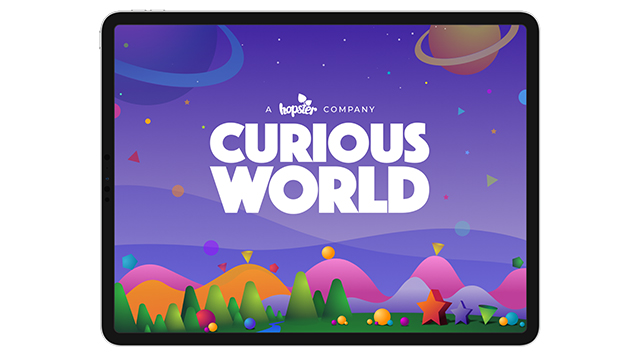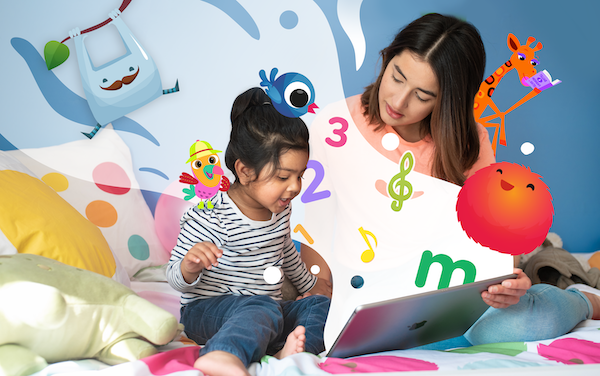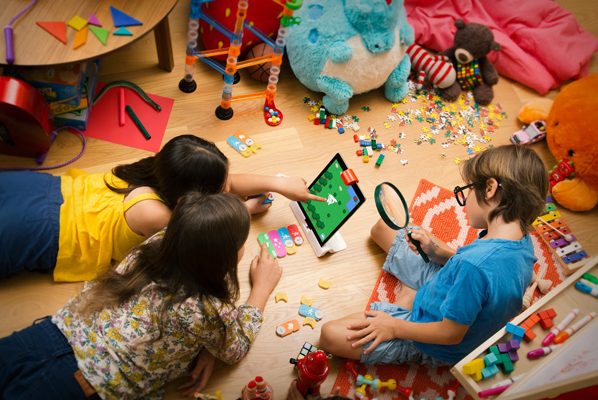CJ Kettler, the executive VP and chief of consumer brands and strategy at Houghton Mifflin Harcourt, speaks with TV Kids about the early learning online activity platform Curious World.
CJ Kettler has always believed in the power of character and story line to entertain children and expand their horizons. She embraced those principles when she ran Sunbow Entertainment—producer of The Tick, Littlest Pet Shop, My Little Pony Tales, Salty’s Lighthouse and Brothers Flub—in the 1990s. The company was sold to Sony Wonder in 1998.
 “The kids’ business at the time was concentrated, with three main players,” explains Kettler, today the executive VP and chief of consumer brands and strategy at Houghton Mifflin Harcourt (HMH), “so I moved to try my hand in other genres.” These included working with Gerry Laybourne at Oxygen Media, launching LIME—a multi-channel, green lifestyle brand, which she then sold—and a number of other entrepreneurial ventures before she found her way back into content for children.
“The kids’ business at the time was concentrated, with three main players,” explains Kettler, today the executive VP and chief of consumer brands and strategy at Houghton Mifflin Harcourt (HMH), “so I moved to try my hand in other genres.” These included working with Gerry Laybourne at Oxygen Media, launching LIME—a multi-channel, green lifestyle brand, which she then sold—and a number of other entrepreneurial ventures before she found her way back into content for children.
“In 2013, I was working for a private equity firm, helping them build and sell yet another company, which happened to be Channel One News [a daily news program for children that is shown in classrooms across the U.S.],” Kettler says. “We sold it to HMH in mid-2014. Once I sold the business to HMH, I was asked to lead their consumer division in the development of new IP and creating digital product for families.”
And that was how Curious World, a subscription platform for preschool learning, was born in 2015. “We took all the e-book assets of HMH and acquired world-class video from around the globe. Between what I knew from the international market and bringing Linda Kahn [president of global consulting firm Linda Kahn Media] on board, who I always say was our secret weapon, we acquired and started to produce original content in video, and games.
“We created Curious World with the view that we could identify and tag all of this content to the eight learning areas as defined by the early learning experts at HMH, because we are primarily a global learning company,” Kettler continues. “We wanted to help parents navigate kids’ learning by recognizing that we could provide a safe, curated, ad-free environment for children. Parents could also see what their children are interested in, by learning area, and know that they were getting good content that was vetted by educators.”
Curious World is marketed to 2- to 7-year-olds, but its sweet spot is the 3-to-5 age group. It offers six originals, including three animated series, A Rhino Named Paul, Moonlight Storytime and Jingle Bilingual, which features bilingual songs that teach kids a language, the first one being Spanish.
“We also did three original live-action series,” says Kettler. “They are craft videos, one called Get Crafty, another one called Recycled Superheroes, and the third about folks in your neighborhood.”
These series were created, in part, by listening to what parents wanted for their preschoolers. These parents were mostly cord-cutters and not necessarily interested in cable subscriptions, Kettler explains. “They wanted to know that their kids could be in a safe environment and playful learning was important. They didn’t necessarily want a skill-and-drill product, but a safe environment where they, too, could participate in what their kids are learning. That’s why we developed Curious World to be an online service, so it’s a digital app, but a lot of our content [also] encourages kids to go offline and make stuff or engage their parents to help them make stuff.”
Curious World, which up until now has been offered as an iOS app for use on the iPhone, iPad or Apple TV, also features licensed product such as They Might Be Giants (Disney Sound), StoryBots (JibJab Bros. Studios), Super Simple Songs (Skyship Entertainment), Kit^n^Kate (Planet Nemo Animation/Ankama) and more.
When asked which type of content on the Curious World app is most popular, Kettler says, “We have pretty broad usage against all media types; I will say parents love the e-books, kids love the games and everyone loves the video!
“Parents also have a dashboard where they can see what their kid is watching,” she continues. “So we are finding that the other thing parents love is that they may look at this dashboard and [find] out that Katie loves science and they didn’t know that. Katie has been watching a lot of science videos, so that means the parents should buy more science books, do science experiments and talk about science. The dashboard provides parents feedback to encourage their kids’ areas of interest.”
The response from the international market has been very positive, says Kettler, who sees future growth centered on market-by-market partnerships and expanding onto Android. After so many years outside of the children’s content business, Kettler was delighted to find that today, even with so many outlets for young viewers, character and story line still matter.
 TVKIDS
TVKIDS



